Shieldbugs are among the most familiar insects in the Hemiptera order. Whilst many of us may refer to any insect or small invertebrate as a bug, only the Hemipterans are the ‘true’ bugs.
What makes an insect a Hemipteran? It sucks – truly. Hemipterans have specific mouthparts that can pierce into plants (and occasionally animals) and suck the juices out of them.
There are almost 2,000 Hemipteran species in the UK, which include the shieldbugs, but also aphids, leatherbugs such as the very common box and dock bugs, and water bugs such as the pond skater, water scorpion and water boatmen.
In this guide we take a closer look at shieldbugs, revealing 12 species that you may be able to spot in the UK.
Looking for more information on insects? Check out our guides to wasps, beetles and butterflies.
Shieldbugs
Common green shieldbug (Palomena prasine)
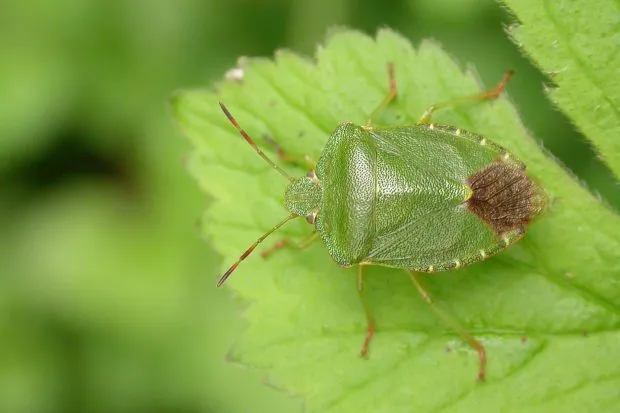
The name gives away how to identify this species – it’s very green, with the exception of the wing tips and the reddish antennae tips. Prior to hibernation, it turns brown in colour. Whilst a relatively common species, it’s not as widespread as some of the other shieldbugs, only reaching southern Scotland, but gradually expanding its range. It can be easily confused with the non-native southern green shieldbug which is also green, including the wing tips.
Hawthorn shieldbug (Acanthosoma haemorrhoidale)

One of our green-and-red shieldbug species, the hawthorn shieldbug is the largest shieldbug in the UK. It grows up to 17mm in length, and is common and widespread across most of the country. As the name suggests, the nymphs can usually be found on hawthorn where it feeds on haws. However it can also feed on deciduous trees. The species overwinters as an adult, and can become darker just before hibernation. It emerges in spring to mate.
Birch shieldbug (Elasmostethus interstinctus)

Another of our green-and-red shieldbugs, this species does sometimes get confused with the hawthorn shieldbug. It is also common and widespread across the UK, and hibernates over winter. However it is smaller in size and grows to only 12mm in length. Plus, the extensions on its pronotum (shoulders) are not tipped with red and the scutellum (triangular shield on the back) isn’t completely green. The nymphs mainly feed on birch, but also hazel and aspen.
Forest bug/red-legged shieldbug (Pentatoma rufipes)
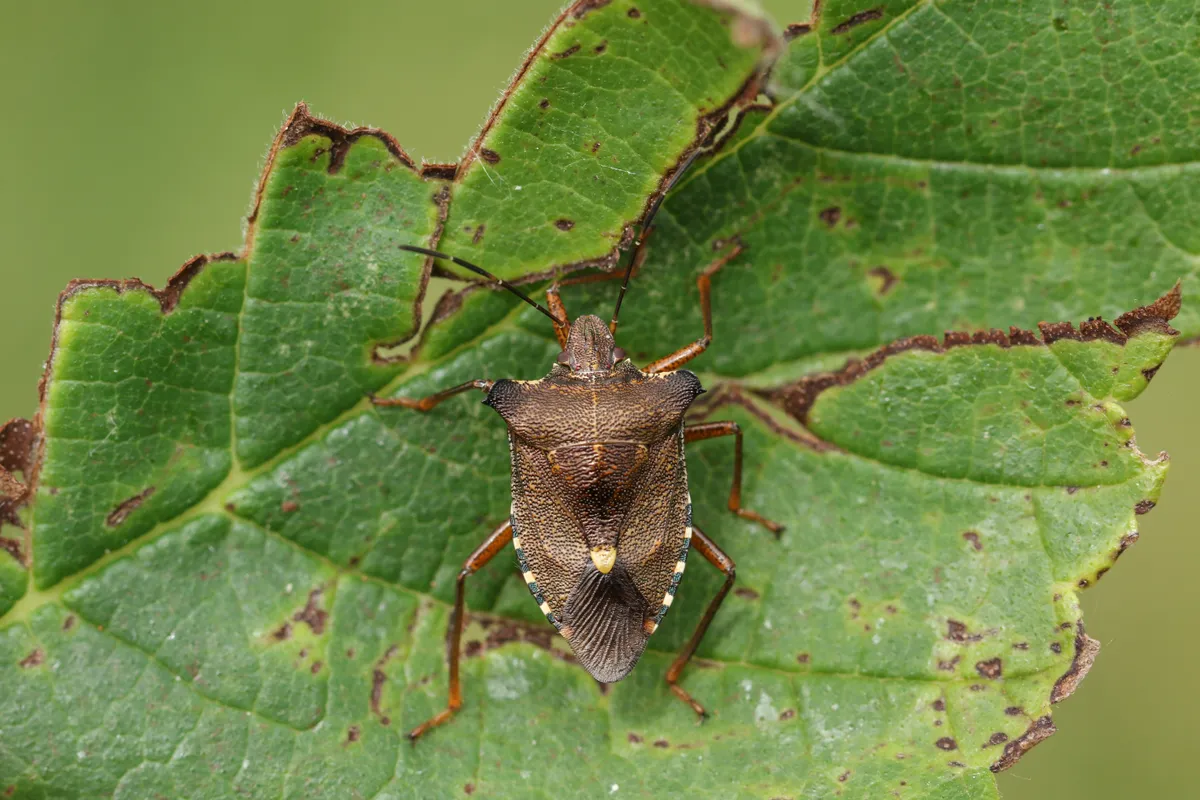
This large brown shieldbug, measuring up to 15mm in length, is well-named in two respects. As the ‘forest bug’, it is usually associated with oak and broad-leaved woodlands, as well as gardens. It is also known by an alternative name of the ‘red-legged shieldbug’, named for its orange-red coloured legs. It’s one of the species that overwinters as a nymph instead of as an adult, and as an adult, it feeds on both plants and other insects.
British butterfly guide
Britain is home to 59 species of butterfly, which all play an important role in pollination. In our expert guide to butterflies, we take a look at butterfly identification, common butterfly species, how long butterflies live, and where to see them in the UK.
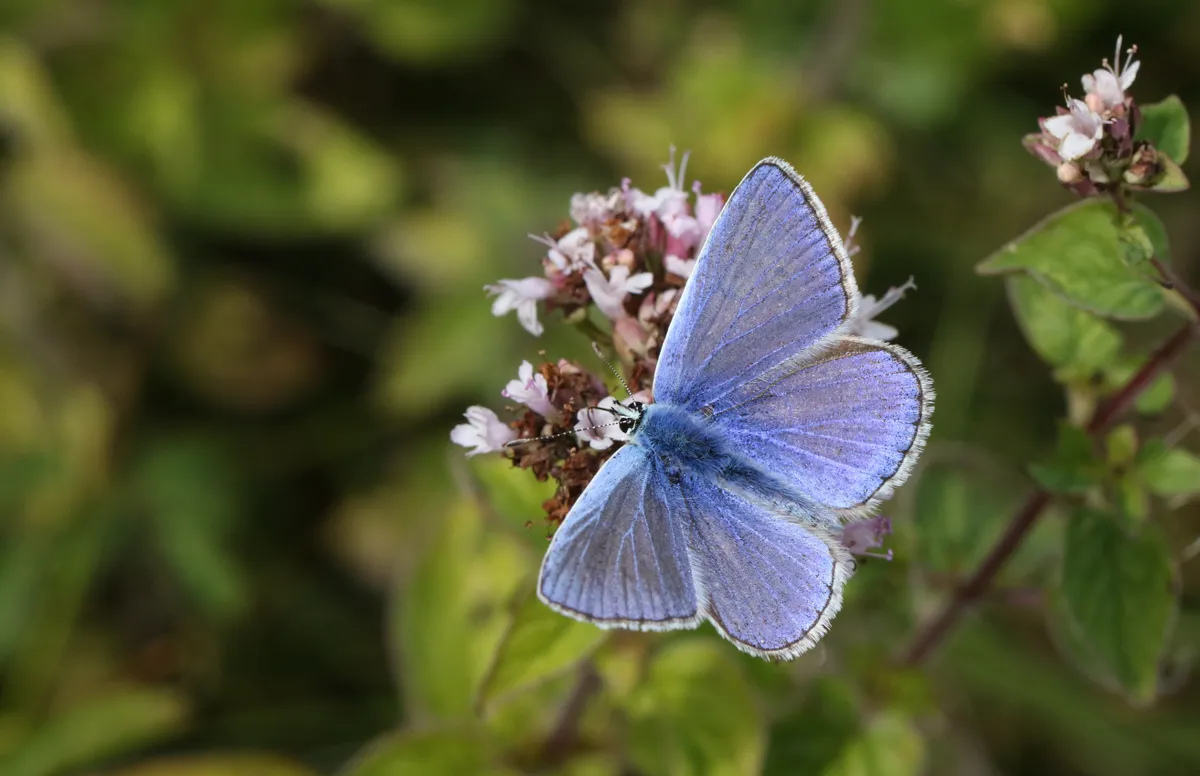
Bronze shieldbug (Troilus luridus)
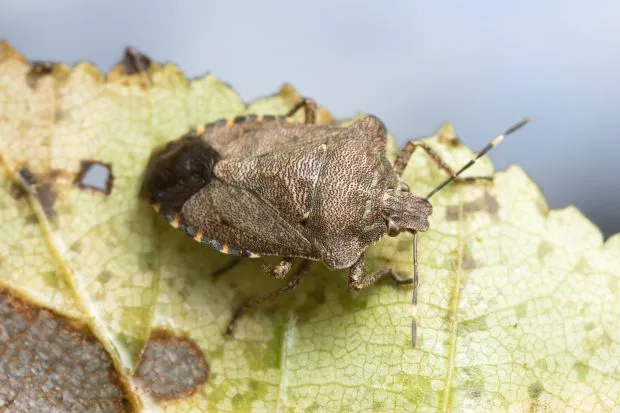
The bronze shieldbug is one of the predatory shieldbug species. It feeds on tree sap as a nymph, but then begins feeding on other insects, particularly caterpillars. Some other shieldbug species has a similar colouration, and one of the key identification features is the banding on the antennae. There is a single yellow-orange band on each antenna, which are otherwise dark. It is a woodland species found on both deciduous and coniferous trees.
Hairy/sloe shieldbug (Dolycoris baccarum)

This large species is covered with visible hairs – even as a nymph. It is a lovely purple colour with a pale tip to its scutellum (darkening prior to hibernation), and banding on its antennae and connexivum (sides of the abdomen). Its alternative name of sloe shieldbug indicates an association with blackthorn, but it can actually be found on a wide variety of plants. It is common in much of England, Wales and southern Ireland.
Blue shieldbug (Zicrona caerulea)
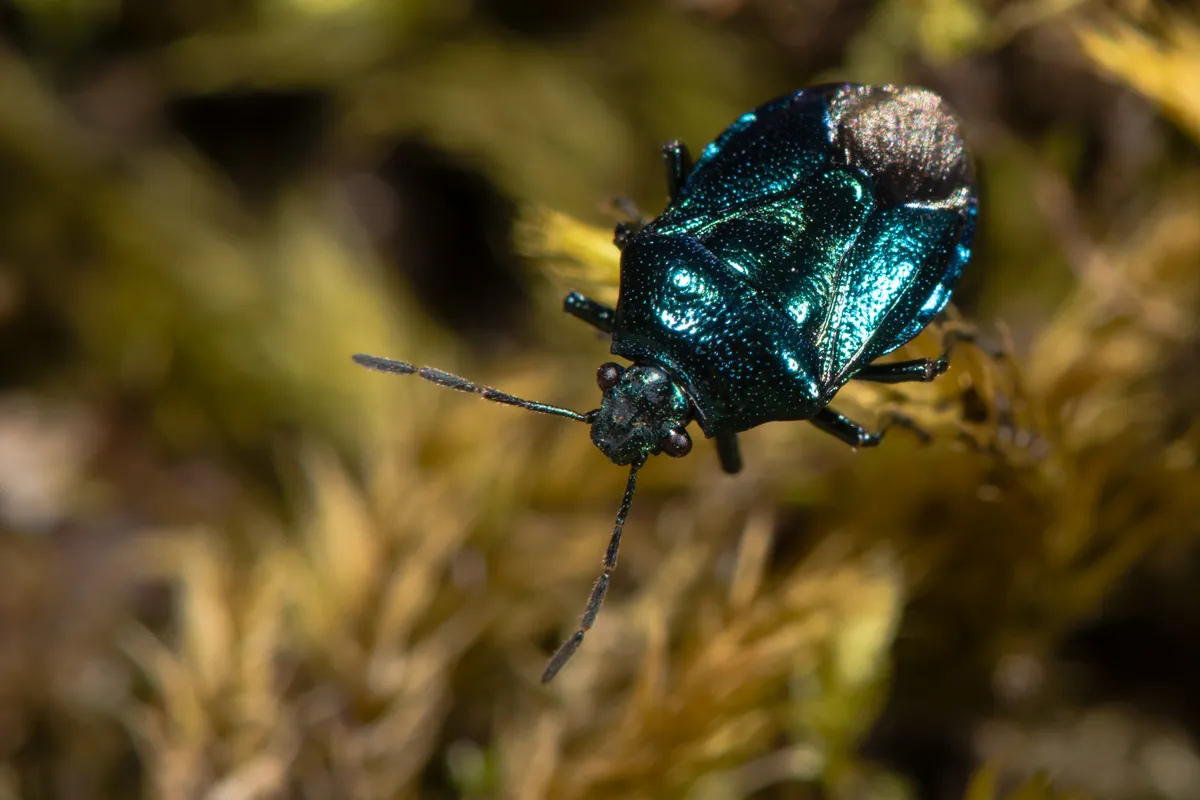
With its metallic blue-green colouration, this is one of our prettiest shieldbugs, but don’t let looks deceive you – it’s another of the predatory species and it feeds mainly on shiny blue leaf beetles, which it could be confused for. It is also on the smaller side, growing up to just 7mm in length. It is widespread in the UK and Ireland in low vegetation in wet grasslands, heaths and woodlands, but localised in northern England, Wales, Scotland and Ireland.
Caterpillars guide
Caterpillars in the UK come in many shapes and sizes, from little green ones to striking yellow and black ones. But which is which, and what butterfly or moth do they turn into? Learn how to to identify some of the UK's most common and spectacular species, what they eat and whether they're poisonous with our beginner's guide to caterpillars.
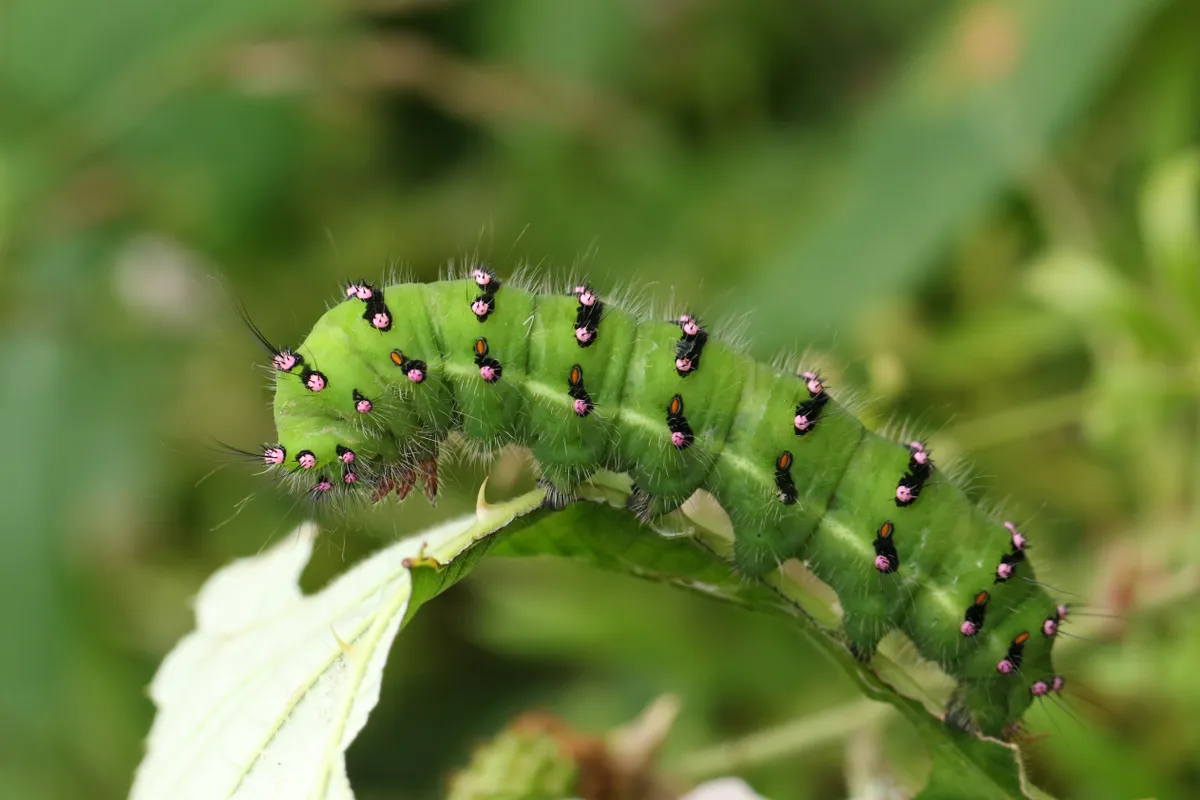
Gorse shieldbug (Piezodoros lituratus)
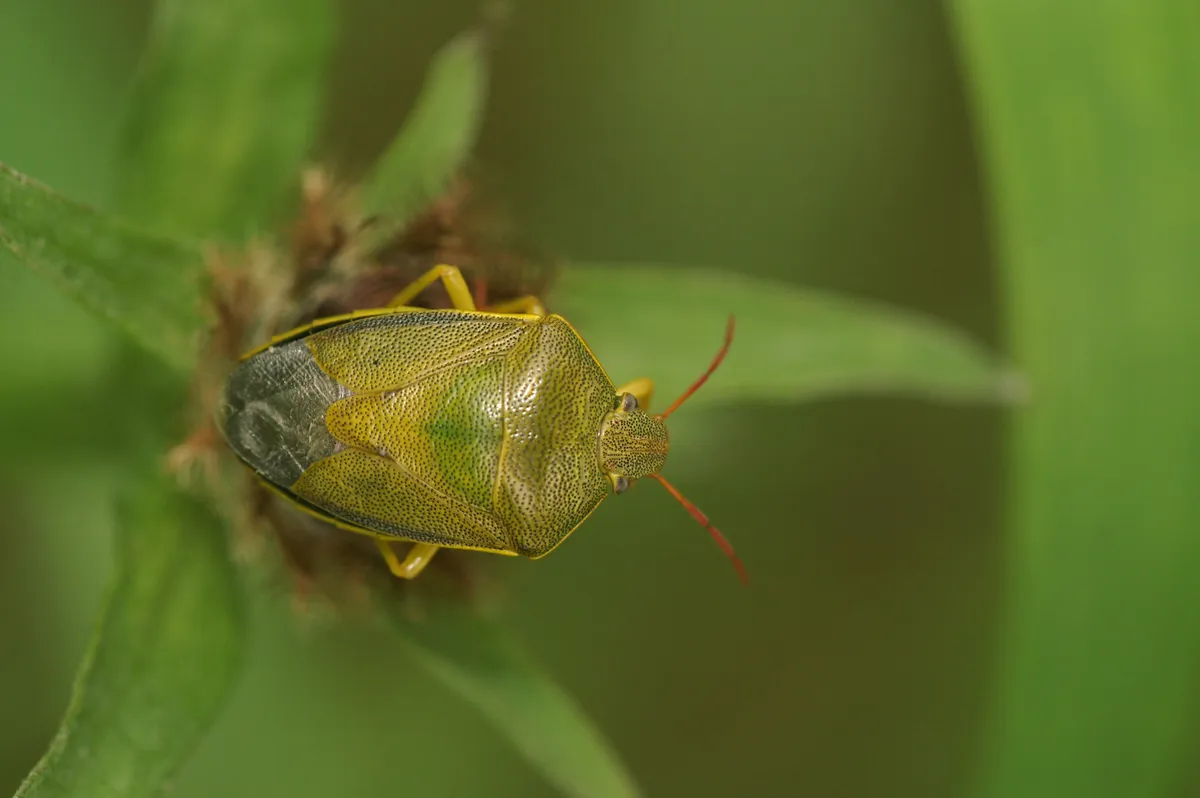
The gorse shieldbug has two colour forms, and they are quite different. In spring, an adult born in the previous year emerges from hibernation, and is green with red-tipped legs and red antennae, and yellow on its connexivum. When an adult from the new generation appears in late summer, it looks more like a hawthorn or bitch shieldbug with the darker pronotum and wingcases, and green-ish scutellum. As the name suggests, it can be found on gorse and broom.
Pied shieldbug (Tritomegas biocolor)
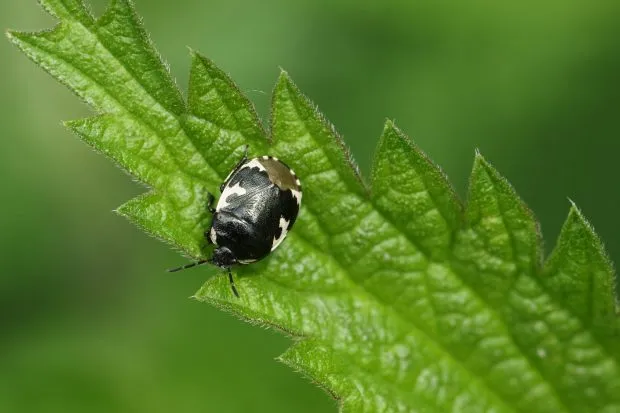
The most distinctive of the Cydnidae family of shieldbugs, this black and white species is a ground-dwelling species that can be found feeding on white dead-nettle and black horehound. As a small shieldbug that measures up to 8mm in length, it can be mistaken for a ladybird. It is mainly found in southern England, and parts of Wales. In 2011, the very similar-looking Rambur’s pied shieldbug was found in Kent and is likely to spread.
Spiked shieldbug (Picromerus bidens)
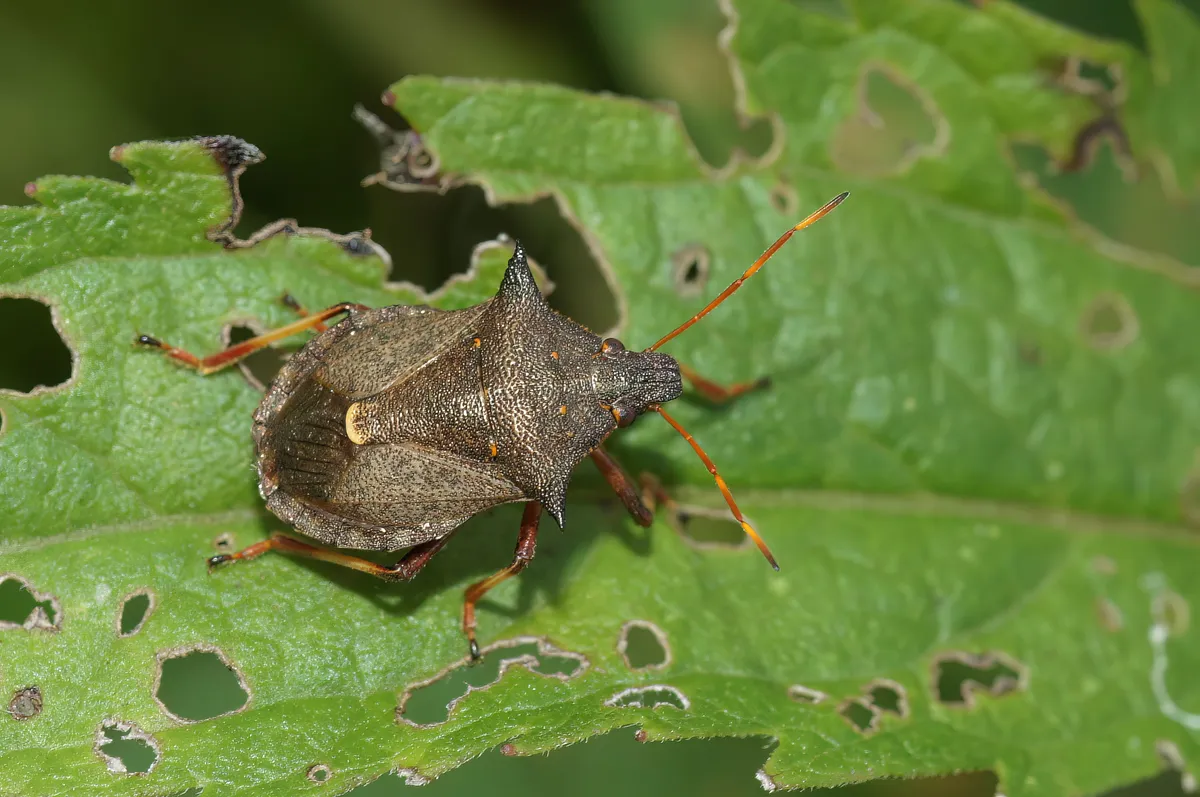
This is one of our most striking shieldbug species, thanks to the impressive spikes on its pronotum and vivid red legs and antennae. These red legs mean it can be mistaken for a red-legged shieldbug, but the tip of its scutellum isn’t as noticeable or as brightly coloured. It actually overwinters as an egg, rather than as a nymph or an adult. Both nymphs and adults are predatory on the caterpillars of butterflies and moths and sawfly larvae.
Parent shieldbug (Elasmucha grisea)
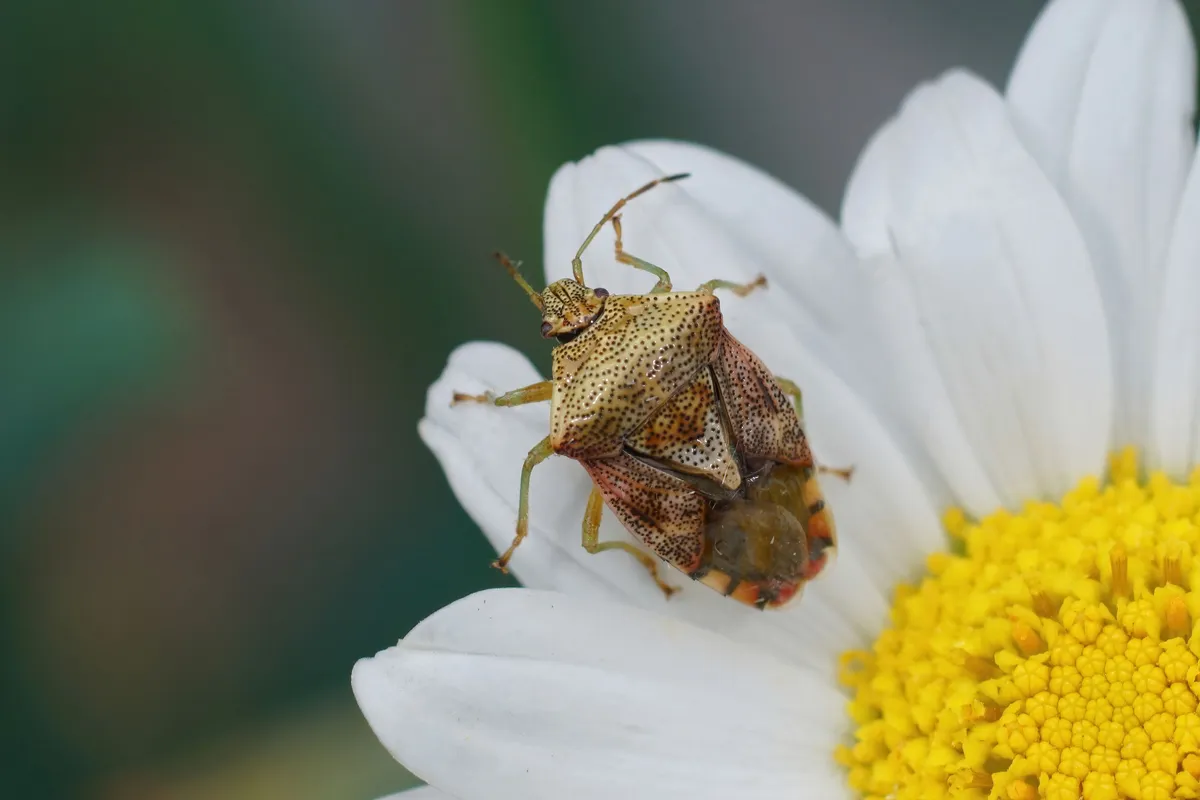
The parent bug is reddish-brown in colour, usually with a distinctive black band across the middle of its scutellum, and with black and white bands on the connexivum. The species is named for its unusual behaviour. Typically, shieldbugs lay their eggs and leave them to fend for themselves, but the parent bug is different. Although the male dies soon after breeding in spring, the female broods the eggs and stays with the hatched nymphs as they develop.
Brassica shieldbug (Eutydema oleracea)

Both the English common named and scientific species name point to where this shieldbug is usually found – on brassica plants, such as garlic mustard and horse-radish. Its alternative name is the crucifer shieldbug, and it can be found in southern and central England. It is mostly dark blue-black, with coloured markings on its body that can vary between individuals – red, yellow or cream-white. It can be mistaken for the two similar but much rarer species: ornate shieldbug and scarlet shieldbug.
